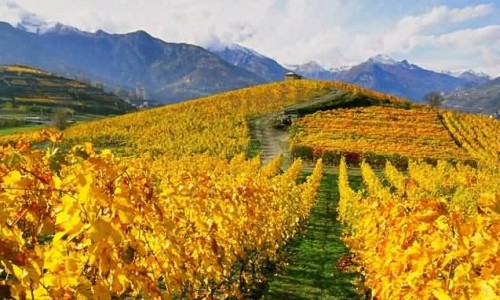





Valle d’Aosta

|
It’s easy to overlook Valle d’Aosta as a wine region: Not only because the production, in the Italian context, is quite small, but also because the region is ‘hidden away’, right up in the northwestern corner, where it forms the connecting line between Italy and France. Due to its position, Valle d’Aosta is an important element, because it is through this region that a lot of people and goods travel between the two countries. It is a traffic that valdostans would prefer to do without, for this transit doesn’t bring much money to Valle d’Aosta. That is provided instead by the great number of ski tourists who come to experience some of the Alps’ highest peaks. And they spend such money to taste the local wines, which really is a chapter apart in the Italian wine book. The vineyards, grouped under the common DOC Valle d’Aosta with various subzones, begin right after you come in through the Mont Blanc tunnel, and they lie in a narrow belt along the river Dora Baltea. The grape selection is very varied, and you can see the influence from France in varieties like Chardonnay, Syrah and Gamay; from Piedmont in the form of Nebbiolo, that in Valle d’Aosta is named Picoutener, which is the main grape in the subzones Arnad-Montjovet and Donna. Many of these wines from the Valle d’Aosta have undergone a qualitative leap in the last year, which endows the splendid view of the various ‘exogenous’ grape varieties with a characteristic Aosta mark that cannot be compared to the wines in Trentino Alto-Adige. If you are interested in wine in the geeky way, it is the more original varieties that make it worth while stopping on the road through the valley, or spice up an after-ski meal with a glass of wine. Several of the original local varieties are in common with those found in Switzerland and the white wines made from the Prie Blanc, which you find in the area of Morgex et La Salle. These are very interesting mountain wines with everything you need in terms of slenderness and supple elegance, while the wines of the more widespread Petite Arvin have a slightly richer tone. On the red wine front, the local grape Petit Rouge, is dominating in several sub-areas, for example Chambave and Torrette. The wines are slim and elegant with a delicate fruit character. |
|
||||||||||||||||